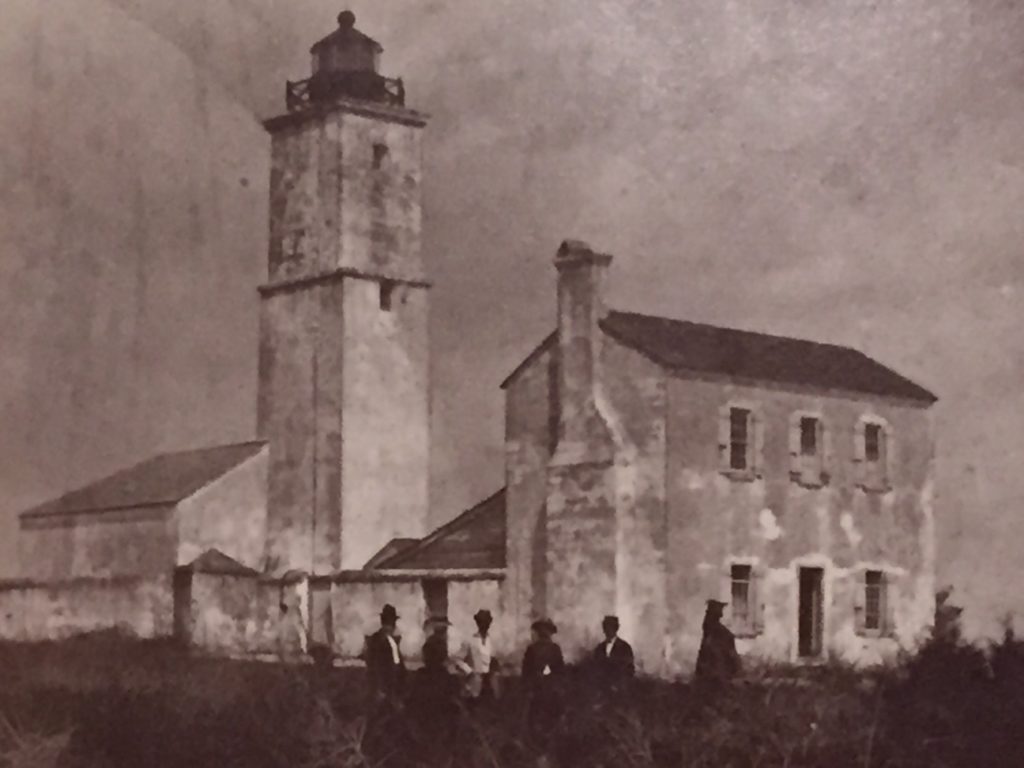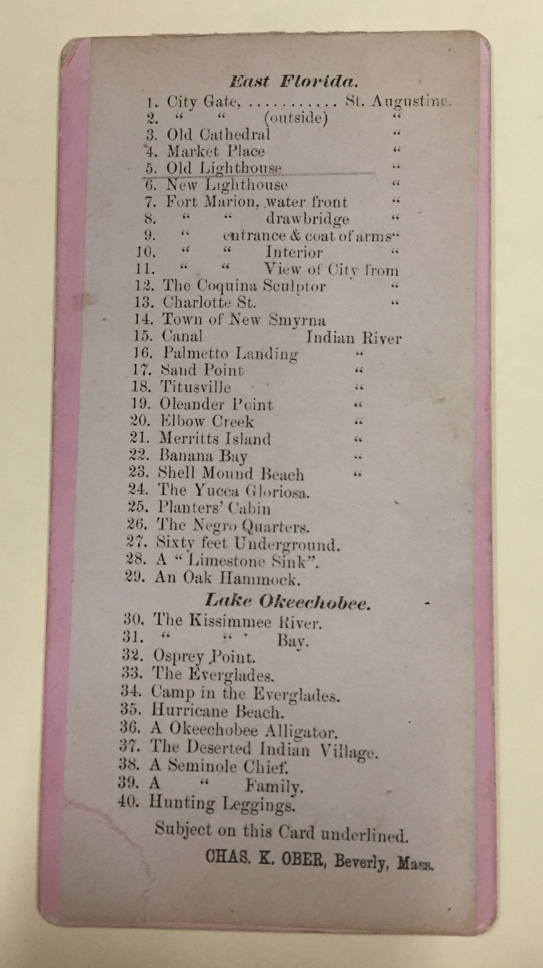For this blog we chose to discuss an object that was recently donated to the museum. This stereographic card is a new one for our collections, and the image was new to everyone on staff.
What is a stereographic card?
Stereographic cards or stereoviews were popular in the U.S. from mid-1800s until early 1920s. They were extremely popular in the late 1800s. The cards consist of two photographs of object or subject at slightly different angles. The photographs were glued to cardboard with a slight separation between the images. To view the card one had to use a stereoscope which was very basic containing two prismatic lenses. When the card is viewed through a stereoscope each picture is focused by a separate lens to each eye.
By separately magnifying each of the images, the process mimics what the eyes naturally do. As a result the process creates depth perception or gives the appearance of seeing the subject in three dimensions. Though the popularity of these cards dimensioned stereoscopes did not go away and probably several of us grew up with a View-master.
The date of this particular stereographic card is not known exactly. The image is interesting as the original lighthouse is the backdrop for a group of people. In this shot the old Spanish tower does not have the appearance of being active. Earlier images of the old lighthouse depict additional fencing for livestock and areas impacted from the daily activities at the tower. This would suggest that the image was probably taken shortly after our Lighthouse was lit.
As with any object in collections, we look at the finer details that may provide a clue. That was certainly the case for this object when we look at the reverse side and see a catalog list of other images that the photographer had created. Included on the list is the “New Lighthouse.”
The list of other images is interesting; often these types of cards were mementos or souvenirs for people traveling. They quite often depict unique local features such as buildings or natural scenery.
Who took the original image?
Additionally, people were often included in the images. The photo credit for this image is listed as “Char K Ober, Beverly, MA” which is interesting. Charles Kellogg Ober was an author from Beverly, MA, and played an important role in the development of the YMCA at the turn the century. Associated names with individuals in historic images it is always nice to have.
The story photographer, Charles Ober, is interesting. Since he became a prominent figure in the early days of the YMCA there is actually an archive collection pertaining to his work. Unfortunately, there were no records about his days as a photographer.
So how and why did Charles Ober produce a series of stereoview cards?
Well, Charles’ brother, Frederick Ober, was a well-known naturalist and author. Frederick left his life of shoe making and came to Florida on a hunting expedition from 1872 to 1874. These dates correlate with the time period of the stereograph.
Did Charles come to St. Augustine to play tourist and visit his brother?
It will be interesting to see if we can determine that. If this is the case we may be able to determine who the individuals are in this image as Frederick was known to write about his travels (as well as do his own photography). Frederick spent a good portion of his hunting trip in the Lake Okeechobee area (which Charles had listed several cards from that area on the reverse side of the stereoview card). The story continues a bit more as we look at other archives and Charles Ober photography, there is reference to some of his images possibly being utilized or referenced by a columnist D. Webster Dixon.
In 1875-1876, Dixon journeyed to Florida and took a steamboat on St. Johns River and of course visits St. Augustine! He wrote about his travels in Florida as a correspondent for the St. Albans Messenger back in Vermont. While there appears to be some connection between Dixon’s work and potentially Charles Ober’s photography no direct correspondence has been found yet.
Unfortunately, we sometimes walk away from research with more questions than answers. This is certainly the case at the moment, particularly as to who the individuals in the image are. Are one of the Ober brothers or Dixon in the image? Is one of the individuals one of our Lighthouse keepers? The questions remain, but perhaps we have enough information to find the answer.
Jason Titcomb is the Chief Curator for the St Augustine Lighthouse & Maritime Museum. He holds a graduate degree in anthropology from Iowa State University.




